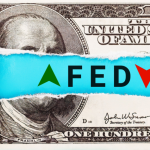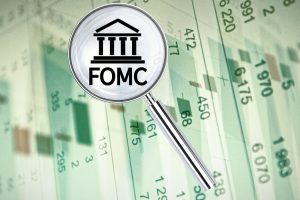
As the U.S. dollar experiences a gradual decline in purchasing power, investors are increasingly turning to precious metals stocks as a safe haven. Precious metals, like gold and silver, have historically served as a hedge against inflation and currency devaluation.
Investing in companies involved in the exploration, mining and production of these metals can offer robust portfolio diversification. Moreover, investors can gain exposure to the price movements of these commodities, without the need for physical ownership. With central banks worldwide adopting more accommodative monetary policies and geopolitical uncertainties adding to market volatility, the demand for precious metal assets is poised to rise.
Now, let’s unpack the top three precious metals stocks to buy on U.S. currency devaluation in 2024!
SPDR Gold Trust (GLD)

SPDR Gold Trust (NYSEARCA:GLD) is the largest physically backed gold ETF in the world. It is not a stock, but it remains the best way for investors to gain exposure to physical gold bullion.
SPDR Gold Trust has been on a tear so far in 2024. The ETF is up 14% year-to-date (YTD), as investors remain concerned about inflation and the broader global economy. Inflation remains sticky, and the consumer is in tough shape despite what the pundits are reporting. Having exposure to a physical asset like gold, which has stood the test of time for thousands of years, could prove to be a sound investment strategy. The ETF tracks the price of gold by holding physical gold bars in secure coffers. It holds 26.7 million ounces of gold, equivalent to approximately 832 tonnes of bullion. As the dollar weakens, the price of gold typically rises, and so does the value of GLD. That makes GLD one of the most noteworthy precious metals stocks to own in 2024.
Wheaton Precious Metals (WPM)

Wheaton Precious Metals (NYSE:WPM) is a precious metals streaming company headquartered in Vancouver, Canada. The company is unique in that it doesn’t directly mine the commodities but provides financing to miners in exchange for ownership of production rights to the mines.
Wheaton’s focus on exposure to physical gold and silver makes it a compelling investment option. Its business model is less risky than other precious metal mining companies, as it is not exposed to operational and CAPEX risks. The company can also leverage comprehensive purchase agreements to acquire precious metal assets at a discount, selling them on the open market. Additionally, the company’s high profit margins are another competitive advantage. In its Q1 FY24, revenue increased 38% year-over-year (YOY) to $297 million. Net income skyrocketed 47% YOY to $164 million, or $0.36 per share. As of March 31st, 2024, the company entered 38 long-term purchase agreements. WPM stock is on the move for higher prices in 2024.
Harmony Gold Mining (HMY)

Harmony Gold Mining (NYSE:HMY) has risen nearly 50% YTD, largely driven by rising gold prices and strong earnings in the 2023 fiscal year. While South African gold producers have struggled in recent years, Harmony’s profitability has been accelerating.
Harmony is the largest gold producer in South Africa, with operations spanning various regions of the country. It also has additional mining operations in Australia and Papua New Guinea. As a gold miner, Harmony directly benefits from rising gold prices that accompany a weakening dollar. The company’s extensive reserves and ongoing exploration activities provide a solid foundation for future growth. Moreover, it has demonstrated resilience amidst higher interest rates and a tougher macroeconomic landscape. In FY23, Harmony produced 1.46 million ounces of gold. Its costs have remained under control despite high inflationary pressures. The company also generated substantial FCF from operations, with headline earnings significantly higher than 2022 levels. HMY stock is well-positioned to dominate over the next decade, with the commodity supercycle in full effect.
On the date of publication, Terel Miles did not hold (either directly or indirectly) any positions in the securities mentioned in this article. The opinions expressed in this article are those of the writer, subject to the InvestorPlace.com Publishing Guidelines.






